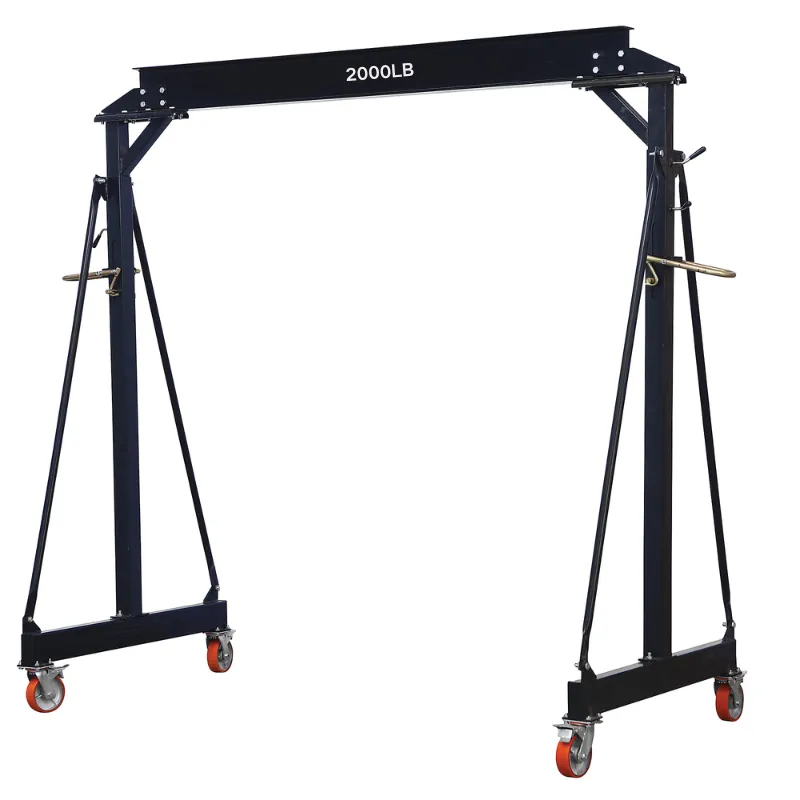Strategies for Efficient Relocation of Industrial Equipment in Manufacturing Facilities
Industrial Equipment Relocation A Comprehensive Guide
Relocating industrial equipment is a complex and often daunting task that requires careful planning, precise execution, and meticulous attention to detail. As businesses expand or shift their operations, the need to move heavy machinery and equipment arises. Whether relocating to a new facility, upgrading existing machinery, or simply rearranging the layout for optimization, understanding the intricacies of industrial equipment relocation is critical to ensuring minimal downtime and safeguarding investments.
Planning the Relocation
The first step in any successful relocation process is thorough planning. Sufficient time should be allocated to assess the current setup and determine the best strategy for the move. Key aspects to consider include
1. Inventory Assessment Conduct a comprehensive inventory of all equipment that will be relocated. This includes noting the specifications, sizes, weights, and conditions of each item. By understanding what needs to be moved, businesses can better prepare for the logistics involved.
2. Site Assessment Evaluate both the existing location and the new facility. This involves considering the layout, access points, and any modifications that may need to be made to accommodate the new setup. Understanding the spatial dynamics can prevent potential issues during the actual move.
3. Timeline Development Establish a detailed timeline for the relocation process. This should include a schedule for disassembly, transportation, reassembly, and testing of the equipment. Despite the desire to expedite the move, it is essential to ensure each phase is given adequate time and resources.
Engaging Professionals
While it may be tempting for businesses to handle equipment relocation internally to save costs, the complexities involved often necessitate professional assistance. Specialized companies that focus on industrial equipment relocation have the expertise, tools, and experience needed to manage the process seamlessly. Key reasons to consider professional help include
industrial equipment relocation

2. Safety Relocating heavy machinery poses significant safety risks. Professional movers ensure compliance with safety regulations, protecting workers and equipment.
3. Efficiency Experienced movers can complete the relocation in a fraction of the time it would take an untrained team, thus reducing operational downtime.
The Relocation Process
Once planning and professional engagement are in place, the actual relocation can begin. This stage involves several critical steps
1. Disassembly Large machinery often needs to be disassembled before moving. This should be done methodically and according to the manufacturer’s guidelines to avoid damage.
2. Transport Safe transport is paramount. This may involve using cranes, forklifts, or specialized trucks designed for carrying heavy loads. Ensuring that equipment is properly secured during transit will mitigate the risk of damage.
3. Reassembly and Testing Upon arrival at the new location, equipment will need to be reassembled and calibrated. Testing equipment post-move is essential to confirm that everything operates as intended and to identify any potential issues early.
4. Finalizing Documentation Throughout the relocation process, maintaining comprehensive documentation is crucial. This includes manuals, assembly instructions, and maintenance schedules which will aid in any future moves or servicing needs.
Conclusion
Industrial equipment relocation is a multifaceted operation that demands meticulous planning and execution. The complexities involved—including logistics, safety concerns, and technical challenges—highlight the necessity of thorough preparation and, often, professional intervention. For businesses undertaking such a move, the rewards can be substantial, including improved productivity and operational efficiency. By recognizing the importance of each step in the relocation process, companies can ensure a successful transition, ultimately enhancing their ability to grow and adapt to an ever-changing industrial landscape.
-
Unlock Seamless Relocation with Our Heavy Equipment Moving ExpertiseNewsJun.06,2025
-
Unleash Unrivaled Flexibility with Our Adjustable Gantry CraneNewsJun.06,2025
-
Unleash Heavy-Duty Efficiency with Our Industrial Gantry Crane SolutionsNewsJun.06,2025
-
Revolutionize Steel Handling with Our Magnetic Lifter RangeNewsJun.06,2025
-
Master Equipment Mobility with Premium Machinery Mover SolutionsNewsJun.06,2025
-
Elevate Your Material Handling with Magnetic Lifter TechnologyNewsJun.06,2025
-
YS Permanent Lifting Magnets: The Smarter Way to Handle SteelNewsMay.22,2025
